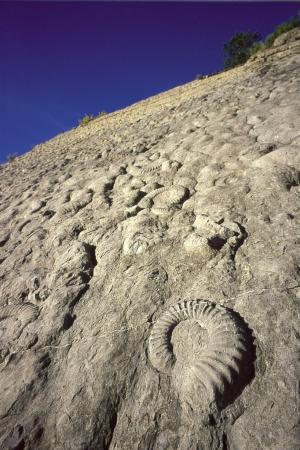Ancient inhabitants of Provence find home in Japan
In the form of an absolutely perfect wall replica, the remains of some of the oldest dwellers of Provence have found a home in the north-eastern Japanese town of Kamaishi, Digne's "sister city" since 1994.
In this small steel town where the first Japanese foundry was built in 1857, the Iron & Steel History Museum exhibits a real-size, scientifically-accurate copy of the "Ammonite slab," one of the jewels of the Digne Geological Reservation.
Ammonites are marine animals resembling present-day nautiluses; long-extinct, they thrived 200 million years ago in the shallow sea that covered what is now Provence. Some 1.5 kilometres north of Digne, a 350-square-metre slab of limestone has preserved the fossilized remains of more than 1,500 ammonites—this is the slab the curators of the Kamaishi Museum wanted to buy before being convinced to settle for a replica.
The "Ammonite slab" is but one of the many wonders in the Reservation whose protected territory covers an area of 230,000 hectares and spans more than 59 villages.
The same geological processes that preserved the ammonites have frozen countless other fossils into stone, including the complete skeleton of an ichthyosaur—a sea reptile that lived in Jurassic times—and the delicate tracks that a small plover bird imprinted on a sand beach some 70 million years ago.
The Digne Geological Reservation, which was established in 1984, is the largest in Europe. It is an open-sky museum the size of half a department, providing vistas of spectacular geological features like the "Vélodrome," a unique fold formation from the Miocene that looks like a giant cycling track.
The Reservation features site museums, parks and art installations; it organizes tours, exhibitions, conferences and entertainment for children. At the "Musée-Promenade," on a hilltop overlooking Digne, the Kamaishi Japanese Garden reminds visitors of the link between the two cities.




